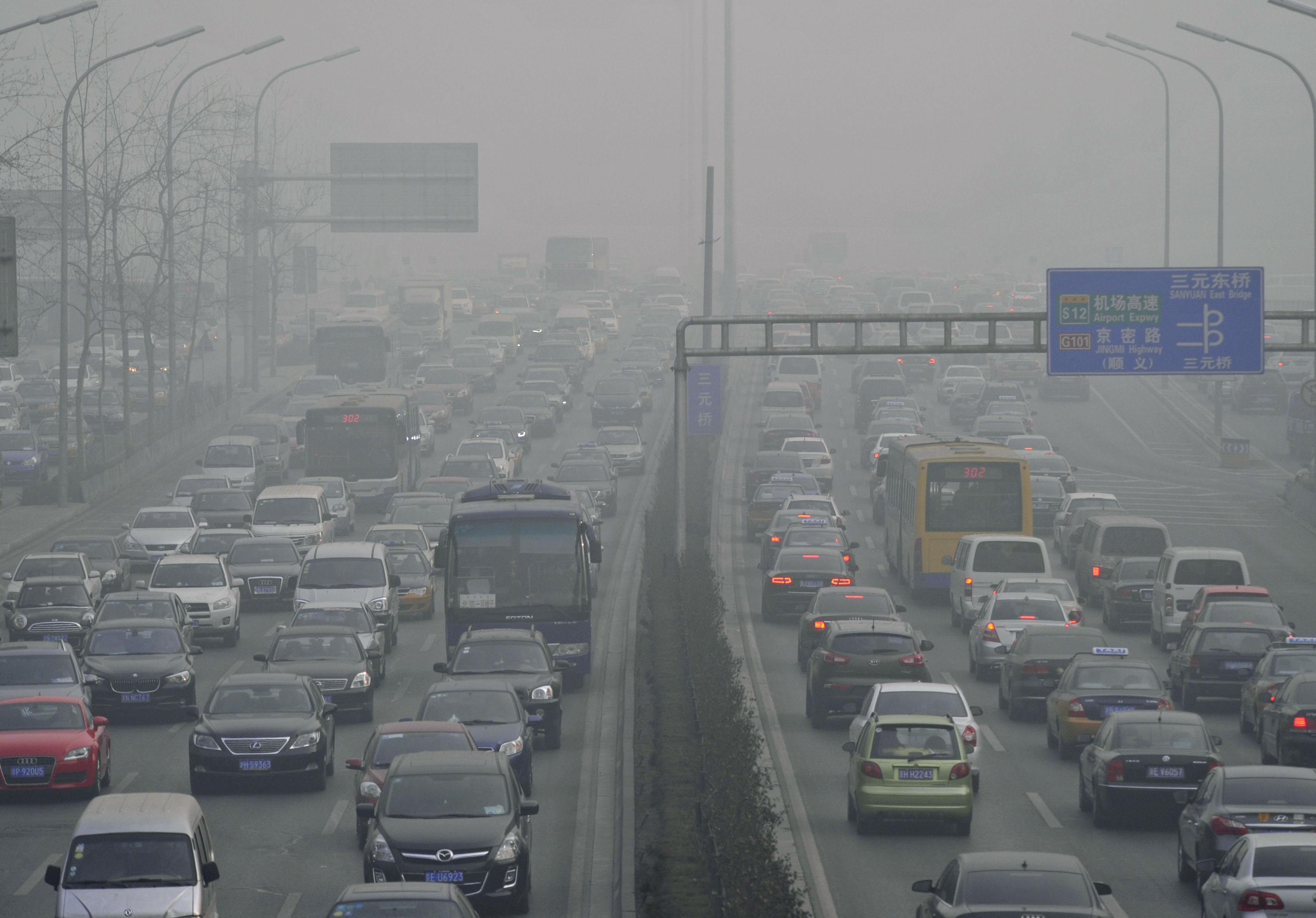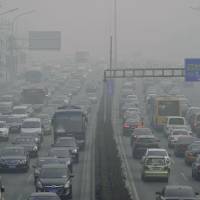Smog in China has reached alarming levels as its rapid industrialization spews ever-more toxic particles into the air.
Over the past month or so, the problem has become particularly acute, raising health concerns in neighboring parts of Asia, including Japan.
Following are questions and answers about China's smog problem and its possible effects on Japan.
How and when did China's smog problem begin?
The beginning of China's current air pollution problem that affects Japan has been traced back to early January and centers on Beijing and areas east of the capital.
As smoke from coal-burning power plants combines with vehicle exhaust and factory emissions, it produces a toxic smog that can become especially bad in winter.
In recent years, the smog has been getting worse because of the rising popularity of driving in China, which is adding about 15 million cars to its roads each year.
In a normal winter, smog would usually be dissipated by the prevailing winds. This year, however, the winds haven't been as strong, allowing a huge toxic cloud to form.
This cloud is now drifting slowly over much of eastern and southeastern China, and is even encroaching on parts of western Japan.
I often see the term "PM2.5" used in reports about air pollution. What does it mean?
PM stands for "particulate matter," and 2.5 refers to particles in the air that are 2.5 microns in diameter — about 1/30th the diameter of a human hair.
Particles of this size can only be seen through an electron microscope and are easily absorbed by the lungs.
PM2.5 particles are generated by burning fossil fuels, wood, and using pesticides.
They contain nitrates, sulfates, organic chemicals, metals, soil and dust particles, as well as pollen fragments and mold spores.
There is a significant association between exposure to PM2.5 particles and premature death from heart or lung disease. They also can increase the risk of heart attacks, asthma attacks and bronchitis.
What are the environmental standards for PM2.5 particles?
Different countries have different standards.
In 2009, Japan declared that the annual average concentration of PM2.5 particles in air must be less than 15 micrograms per cubic meter, and that the daily average concentration must be less than 35 micrograms/cu. meter.
In the United States, the annual and daily standards are the same as Japan's.
In the European Union, however, new PM2.5 regulations were put into force in 2010 that limit the annual mean concentration to 25 micrograms per cubic meter, with no daily standard.
What about China?
China's national standard for PM2.5 is 75 micrograms per cu. meter daily and the government is aiming to establish an average of 35 micrograms annually.
In heavily polluted Beijing, which far exceeds these levels, efforts are under way to reduce annual PM2.5 concentrations to 60 micrograms per cu. meter by 2015 and 50 micrograms by 2020 in order to meet the national standard by 2030.
On Jan. 12, Beijing recorded PM2.5 levels of more than 900 micrograms/cu. meter.
What effect has China's pollution had on Japan?
So far, western Japan has taken the brunt of the pollution.
Fukuoka has reported that PM2.5 levels exceeded the daily maximum of 35 micrograms/cu. meter on three days in January.
Western Honshu, including Hiroshima, Okayama and the Kansai region, also saw raised PM2.5 levels last month.
In late January, parts of the city of Osaka logged a daily average of 63 micrograms and Kobe saw 41 micrograms.
The Tokai and Hokuriku regions have also reported fairly high PM2.5 levels, as has the Tokyo metropolis.
Chinese pollution in Japan is hardly a new phenomenon. Why is it now suddenly an issue?
Attention is higher partly because of the severity of the cloud thoroughly engulfing Beijing this time.
There is also more information on what's happening now since the Chinese have recently stepped up their PM2.5 monitoring efforts.
But in western Japan, many people believe attention is high because the smog has finally reached Tokyo, drawing the attention of national politicians and the media, unlike past instances where Chinese smog was restricted mostly to Kyushu and western Honshu,
How is Japan attempting to deal with the problem?
PM2.5 concentrations are likely to remain high going into March, just when the pollen season hits, the government warns. But there is little China's neighbors can do besides monitor the air quality and issue public health advisories.
At the same time, howver, Prime Minister Shinzo Abe's government is sending out contradictory messages on the issue.
Chief Cabinet Secretary Yoshihide Suga told reporters last week that the Environment Ministry would conduct an investigation yet was quick to add that "no immediate effects" on health were likely — at least at this point.
Media pundits, however, noted that this Japanese expression was exactly the one used by the government when the Fukushima nuclear crisis erupted, and was unlikely to reassure the public.




